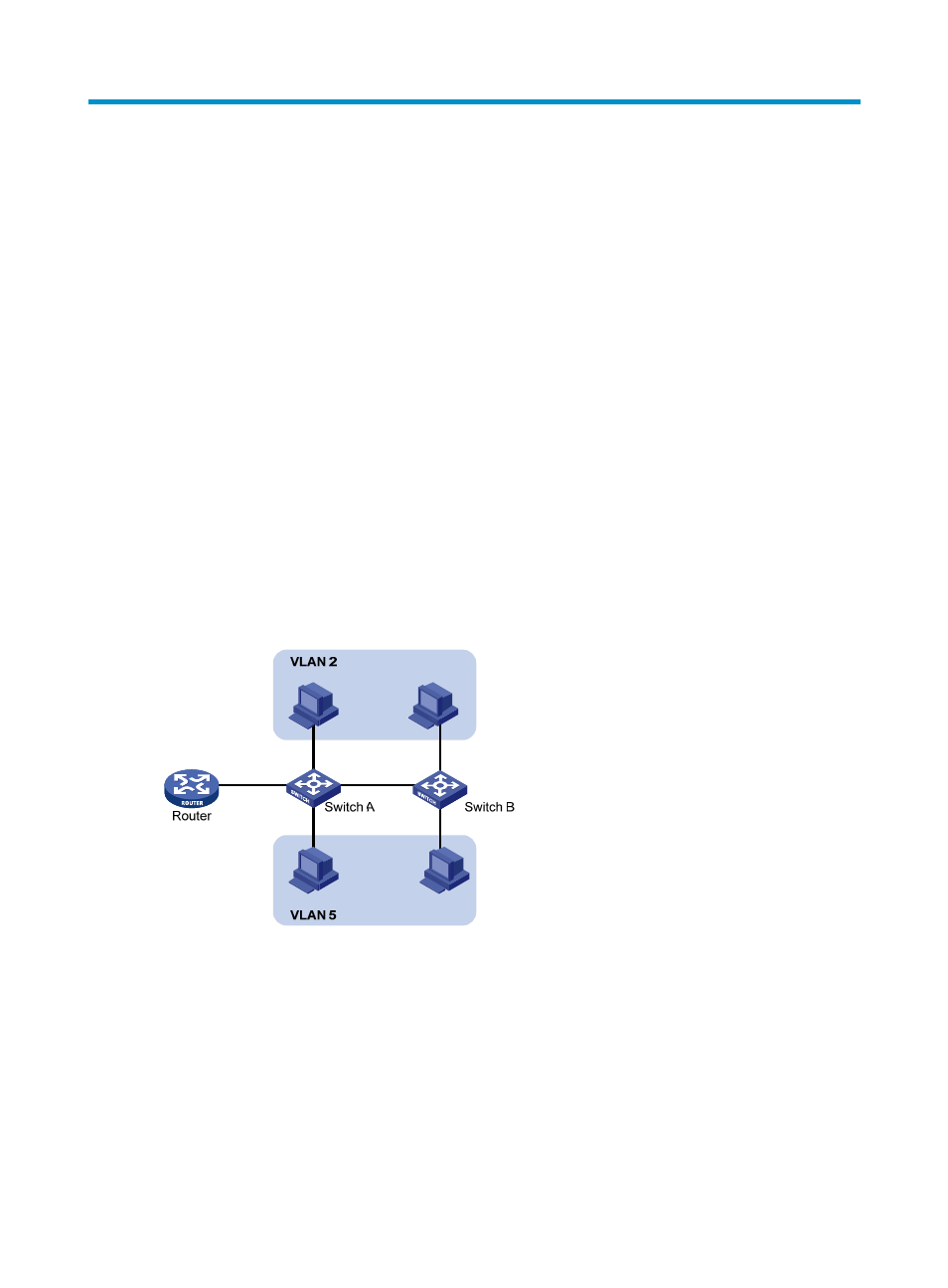Vlan configuration, Introduction to vlan, Vlan overview – H3C Technologies H3C SecBlade NetStream Cards User Manual
Page 98

83
VLAN configuration
This chapter includes these sections:
•
•
Configuring basic VLAN settings
•
Configuring basic settings of a VLAN interface
•
•
Displaying and maintaining VLAN
Introduction to VLAN
VLAN overview
Ethernet is a network technology based on the Carrier Sense Multiple Access/Collision Detect
(CSMA/CD) mechanism. Because the medium is shared, collisions and excessive broadcasts are
common on Ethernet networks. To address the issue, virtual LAN (VLAN) was introduced to break a LAN
down into separate VLANs. VLANs are isolated from each other at Layer 2. A VLAN is a bridging
domain, and all broadcast traffic is contained within it, as shown in
Figure 26 A VLAN diagram
A VLAN is logically divided on an organizational basis rather than on a physical basis. For example, all
workstations and servers used by a particular workgroup can be assigned to the same VLAN, regardless
of their physical locations.
VLAN technology delivers the following benefits:
1.
Confining broadcast traffic within individual VLANs. This reduces bandwidth waste and improves
network performance.
2.
Improving LAN security. By assigning user groups to different VLANs, you can isolate them at
Layer 2. To enable communication between VLANs, routers or Layer 3 switches are required.
